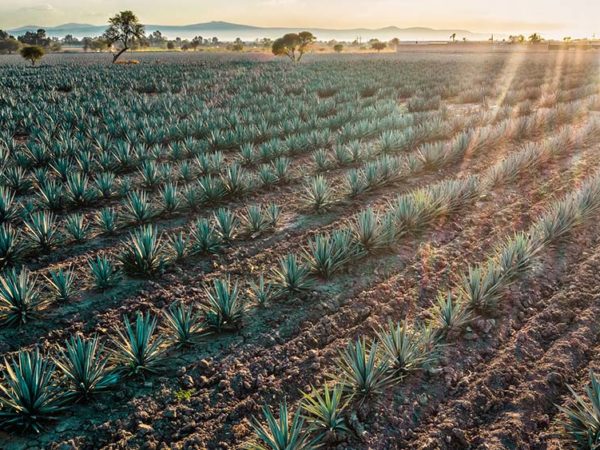
Premiumisation in the US spirits market is being increasingly dominated by two categories – agave and whisky – thanks to a combination of factors including product diversity, strong reasons to buy and powerful brand leaders with high levels of badge value.
In the context of a relatively static market – IWSR analysis reports that spirits volumes in the US were essentially flat in 2022, with value rising by only +4% in an inflationary environment – the growth of whisky and agave spirits at the high-end has been impressive.
Combined, super-premium-and-above whisky and agave saw volumes increase by +14% in 2022 (on top of growth of +23% in 2021), according to IWSR. Breaking this down by price band, prestige-plus (US$200+) combined volumes rose by +15%; prestige (US$100-200) was up +12%; and ultra-premium (U$45-99.99) climbed by +23%.
Looking forward, super-premium-plus agave spirits volumes are poised to grow roughly twice as fast as whisky between 2022 and 2027, meaning that the market for agave spirits at these price points will have grown fivefold in a decade.
However, while the market is growing, there are signs that the rate of growth is slowing: super-premium-plus agave spirits grew +14% H1 2021-22, versus +5% in H1 2022-23 .
“As the tequila category becomes more mature and the number of brands grows, the overall product quality improves and this improvement is seen across all price tiers, justifying trade down,” notes Marten Lodewijks, Director of Consulting – Americas, IWSR.
“With agave prices normalising after being elevated for many years, manufacturers are better able to maintain margins even through lower priced products,” he adds.
This dominance of whisky and agave is also reflected in brand performance: In terms of volume CAGR, 2017 to 2022, the top 12 fastest-growing super-premium-plus spirits brands in the US are dominated by whisky (six) and tequila (four), according to IWSR data.
What is driving this strong dynamic? IWSR has identified three key factors:
1: Product diversity and reasons to buy
Both agave spirits – tequila especially – and whisky of all origins have successfully created a clear and easily comprehensible product pricing hierarchy based on a number of compelling reasons to buy, such as age, origin and flavour.
“The categories that are winning in super-premium-and-above spirits have a wide range of styles, flavours and product types,” says Lodewijks. “There is no one type of single malt Scotch; instead, there is Speyside, Islay, Highland and so on.
“Meanwhile, tequila has quickly diversified into reposado, añejo, extra añejo and cristalino. By comparison, vodka is vodka unless you add flavour – and that is a much more difficult route to premiumisation.”
2: Powerful anchor brands
Despite this diversity, both agave and whisky have strong brand leaders that give consumers a benchmark from which they can use to navigate and explore the wider category.
“One of the reasons why super-premium-plus whisky and tequila are doing so well is the existence of very strong brands at the top of the pyramid,” explains Lodewijks. “These products create an ‘anchor’ for consumers, around which they can experiment, and have acquired the status of lifestyle brands, rather than merely spirits brands.
“These marquee names let consumers know what a single malt, blend, añejo tequila, and so on should taste like – and that organises the category and gives it direction. Other players can then innovate around that, and benefit the category as a whole.”
3: The rise of American whiskey
Historically, premiumisation in the whisky category has been spearheaded by Scotch, but the picture has changed dramatically in recent years, with American whiskey coming to the fore.
Between 2017 and 2022 in the US, according to IWSR figures, super-premium-plus American whiskey volumes grew at a CAGR of +18%, compared with a CAGR of +6% for super-premium-plus Scotch.
Although this growth is forecast to slow in the coming years as the volume base becomes larger, American whiskey volumes in the same price tiers are expected to expand at a CAGR of +8% between 2022 and 2027, ahead of Scotch at a CAGR of +3 %.
“American whiskey’s premiumisation activity used to be typically lower down the price ladder, but the category is now really playing in prestige and above – something that used to be the exclusive domain of Scotch,” says Lodewijks.
“In recent times, American whiskey has gotten progressively better at diversifying itself to satisfy a broader set of consumer needs. From Bourbon to Rrye to Tennessee, there is a broader range of flavours for consumers to choose from.
“Even within those individual categories, innovative use of wood and barrel types has further improved the quality of products, and added interest for consumers. This has levelled the playing field with Scotch.”
Outlook and go-to-market strategies
In the short-term, consumers are showing signs of trading down to find their personal quality-to-price ratio as a response to the higher cost of living. However, IWSR’s expectation remains that trading up will occur again once the economy rebounds and disposable income levels increase.
The growth of agave spirits and whisky at higher price points in the US shows the enduring importance and power of brands. Providing the consumer with credible ‘reasons to believe’ that a product is worth paying more for is and will remain essential.
An example of this is the growing trend of ‘barrel picks’ from retailers for both whisky and agave spirits, whereby retailers are visiting the distilleries and selecting barrels of specific brands for their retail store. Many are extra aged, but all are ‘single barrels’ which is another trend in itself.
“As the premium part of the market grows, product proliferation is inevitable,” says Lodewijks. “This means that not only does a brand have to have strong ‘reasons to believe’ in order to drive purchase, but it also has to have distinctive qualities to stand out from the crowd.
“As a result, marketing touchpoints now matter more than ever – and bartender advocacy will play a crucial role in the future, because the on-trade will always be a key channel for the creation and building of super-premium-and-above brands.”
You may also be interested in reading:
Home consumption vs the on-trade: have pandemic behaviours become entrenched?
Consumer confidence in the US remains broadly positive
The 8 drivers of change for beverage alcohol in 2023 and beyond
Category
Market
- Beer
- Brandy
- Cider
- Gin
- Irish Whiskey
- Low-/No-Alcohol
- Mixed Drinks
- RTDs
- Rum
- Scotch
- Spirits
- Tequila
- US Whiskey
- Vodka
- Whisky
- Wine


